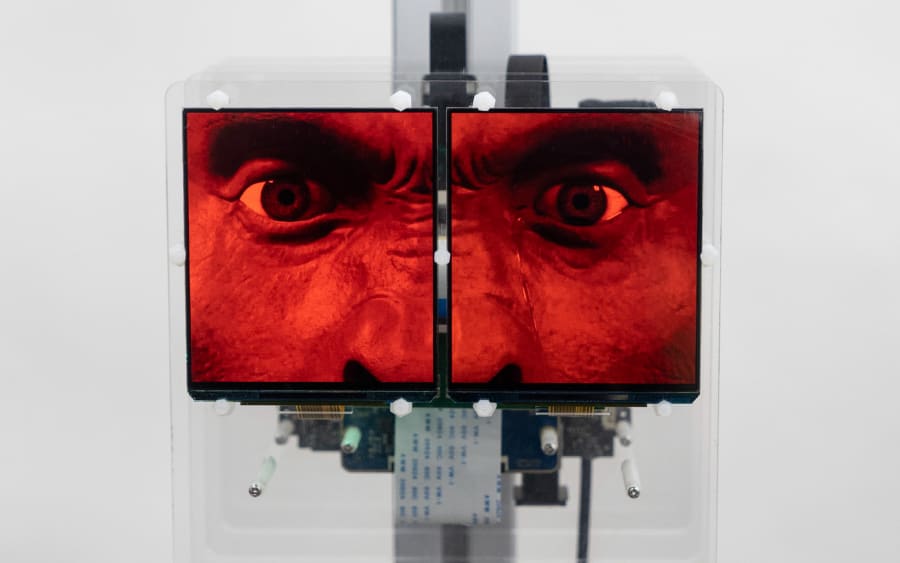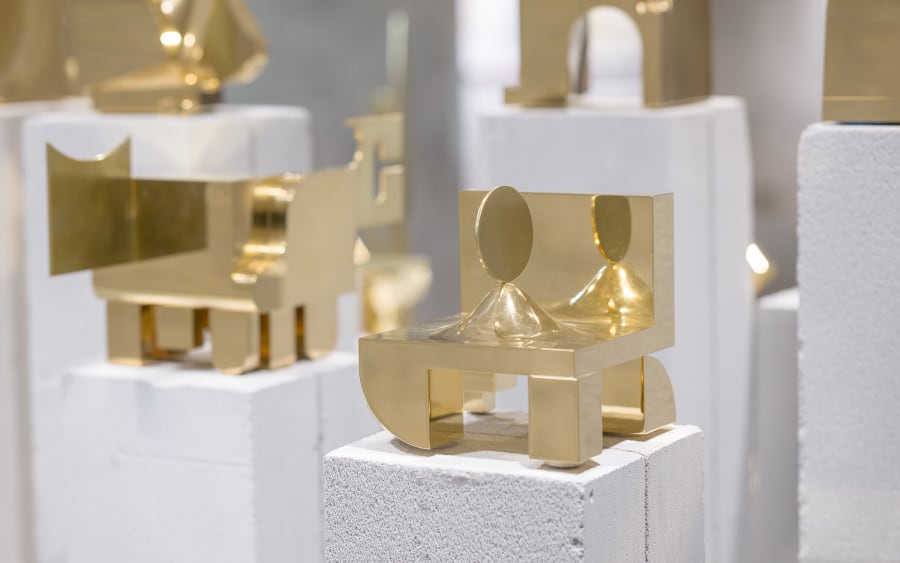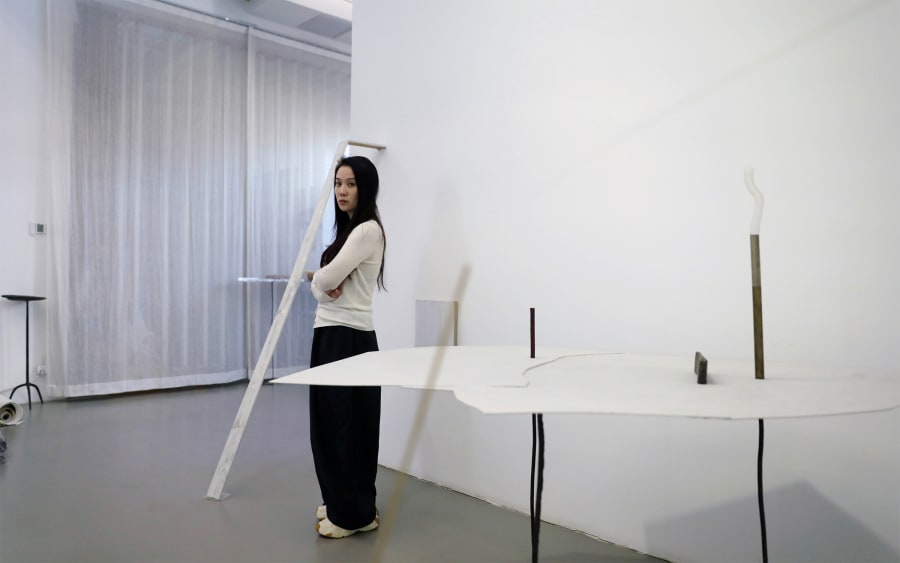Na Mira likes to use the word ‘alchemy.’ It is an apt term for the Los Angeles-based experimental artist, whose mesmerizing videos, sound works, installations, and performances have long eschewed representation for something more ineffable. ‘I’m trying to experience contact, experience what I don’t know,’ Mira tells me.
By mining this liminal, metaphysical space, Mira explores memory, blurred boundaries, shifting perspectives, and the metamorphic concept of home. (The artist was born in Kansas in 1982 but grew up variously in the US, South Korea, Japan, and China.) She regularly engages with sociopolitical forces and her own cultural history, including Korean shamanism, a lineage on her mother’s side. Mira often works with mirrors and the color red, which, in addition to cloaking many of her installations, blankets The Book of Na, a poignant collection of her writing that was published by Wendy’s Subway in 2022.
Her videos are immersive. They transport you out of your own body as you take in the glitchy renderings, which jump between past and present. In Night Vision (2018), for instance, infrared footage of Mira mimicking a tiger in the Korean demilitarized zone – something she was called to do after a message from a shaman – is peppered with shots of other people looking toward the North Korean border. It is poetically jarring, something of a Mira signature.
For the past several years, Mira has been making work in response to the late artist and writer Theresa Hak Kyung Cha, particularly her unfinished film and artist book White Dust From Mongolia, which exists only in obscure fragments and shot lists. Cha was still working on White Dust when she was murdered in 1982 while living in New York City – a tragedy that occurred 44 days before Mira was born. The deeper Mira has dived into the life and work of Cha, the more connections between the two Korean American artists have surfaced.
The latest example in this posthumous partnership is Mira’s piece for her upcoming Art Basel Hong Kong presentation with Park View / Paul Soto gallery. For this new video work, Mira is incorporating footage shot in Seoul last November with her frequent collaborator Hanna Hur.
Before Cha was killed, she had sketched out scenes for White Dust From Mongolia, and even shot some footage on a trip to Korea in 1980, Mira explains. ‘One of the very few scenes that Cha wanted to film was something like: “the street behind the house in Seoul.” And as a child I lived in Seoul,’ Mira says. ‘So, one of the days that I was there with Hanna, I was like, “Oh, why don’t we go to my old house?”’
They found the neighborhood deserted, a ghost town. ‘The house is completely abandoned, and over the last couple years, the entire neighborhood has become cordoned off and is set to be demolished,’ Mira says. But amid the abandoned houses, plants had sprung up everywhere. ‘There was something that felt exalted in the way the land took it back.’ She filmed the scene with her 16 mm camera.
The dichotomy of growth amid demise already ties into Mira’s larger themes, but the parallels between her circumstances filming in Korea in November and Cha’s some 44 years earlier (there is that number again) are hard to ignore. In 1980 when Cha was there, her filming was cut short because the country was in the midst of major political turbulence: Martial law had been declared, and then came the Gwangju Uprising – a student-led protest that swelled to more than 200,000 people rebelling against the military dictatorship. Cha had to evacuate back to the United States.
‘What’s strange about this is that the day that we filmed, the first mass protests were happening,’ Mira says, referencing the labor union rallies in Seoul, staged in opposition to the government’s workers’ rights policies. These were the protests that led South Korean president Yoon Suk Yeol to briefly declare martial law on December 3 – the first time this had happened in the country since 1980. ‘There was this very uncanny sense of return to the beginning of Cha’s project,’ Mira says.
This kind of intuition, a surrender to chance and meaning, has brought Mira notable institutional recognition over the last few years. She was included in the 2022 Whitney Biennial and the museum acquired the film installation she showed there, a new iteration of Night Vision. In 2023, the Museum of Contemporary Art Tucson opened ‘Subrosa’, Mira’s first solo museum exhibition. Last year, she participated in the 15th Gwangju Biennale in South Korea and was part of ‘Scratching at the Moon’ at the Institute of Contemporary Art, Los Angeles, the first focused survey of Asian American artists at a major contemporary art museum in the city.
Mira says she will continue to follow the synchronicities as they pop up, using her voice as an artist to question technology and power. It is part of her shamanistic approach: ‘I don’t think that’s something that ever ends for me,’ she reflects. ‘I’m often feeling like there are these trap doors where it’s like, we just keep going deeper…like, you thought this was the ground, but this is not the ground.’ There is always another level to unlock.
Na Mira is represented by Park View / Paul Soto (Los Angeles, New York) and will be presented in the Discoveries sector at Art Basel Hong Kong. Learn more here.
Grace Edquist is an art writer and the copy director of Vogue magazine. She lives in New York City.
Top image: Na Mira, Night Vision (Red as never been), 2022, installation view. Whitney Biennial 2022: Quiet as It’s Kept, Whitney Museum of American Art.
Published on January 23, 2025.


